In an era long since passed, trains were a critical transportation link on the jungle-covered island of Borneo. Today, as David Bowden discovers, train travels might not be quite as indispensable, but it still plays an important role for both commercial and tourist interests, and offers a relaxing and enjoyable way to explore this fascinating land.
The loud shrill of the steam whistle rang out over Tanjung Aru as the blackened steam locomotive slowly pulled out of the station on its journey of discovery along the Sabah coast to Papar, 70km to the south of Kota Kinabalu.
A railway line fromTanjung Aru inland to the small town of Tenom has been the only railway line on the island of Borneo up until recently, when a private freight line opened in Indonesian Kalimantan to ship coal from the interior to global markets. However, the rail line to Tenom is the only commercial railway on the world’s third-largest island. There was a plan to link it with Sabah’s west coast, but it floundered at Tenom, and there the terminus remains.
Here, two trains operate – the public train owned by Sabah State Railways, which travels the entire distance to Tenom and the privately-owned North Borneo Railway, which makes two tourist steam train journeys per week.The former is an exciting journey to the edge of the rainforests lining the Padas River while the latter is a fun ride along part of the track and which combines the thrill of a steam train trip with a rather nostalgic experience.
The departure of the North Borneo Railway is timed at a civilised 10:00am, so that the mostly foreign tourists have ample time to fuel themselves over breakfast at the resort along the Kota Kinabalu foreshore. The railway is a joint venture between Sabah State Railways and Sutera Harbour Resort. It can accommodate 180 passengers in five fully renovated, colonial-styled train carriages hauled by a Vulcan steam engine. It successfully recreates an era when this part of Borneo was known as British North Borneo. In those days, the train offered the only link for the people who lived in this part of Sabah and, even today, it still serves a valuable function carrying people and goods to and from Tenom.
Fully Fueled
Its steam train is fueled by local baku timber logs to propel it along the narrow rickety train line. It has been noted that this is one of the few trains left in the world that is fuelled by wood.The railway provides comfortable surroundings in carriages which are opulent and indulgent compared to the local train. Many travel on it because it is the only train on Borneo, while others appear to simply enjoy the fun of a bygone era.There is something appealing in the romance of steam train travel as it conjures up images of the past and of a relaxed and civilised mode of transportation. Passengers can get an idea of the days of the Chartered Company and the British Colonial Office of the late 19th century, when young Englishmen set out on a tropical adventure as planters in the mystical Far East. These would have been mostly young lads heading off on the railway into the wilds of the dense jungle in search of adventure and riches beyond their wildest imagination.
The rail line runs from Tanjung Aru through the township of Kinarut on its way to Papar. Tokong Tien Nam Shi Buddhist Temple in Kinarut is the first stop of several along the way, and being a very colourful Buddhist structure, most tourists enjoy the opportunity to take a closer look while the local kids look bemused by the interest shown in something that must be just part of their daily lives. The beaches of Kinarut beside the South China Sea are as close as the train goes to the water, and from here it heads inland.
With lots more whistle-blowing, the train heads off again passing through mangrove and nipah palm swamps and rice fields of Kawang where water buffaloes roam in the fields beside the track. Small roads cross the line and the train driver was in overdrive blasting the whistle to let motorists know to get out of the way.
A Journey for the Senses
The train crossed the Papar River and into Papar where the train stopped for 40 minutes for passengers to experience what is known as the ‘rice bowl’ town with its colourful local market. In its absence, the train is actually turned on a huge rotating wheel and readied for its return trip.
On the return journey, drinks and lunch were served by a team of enthusiastic young pith-helmeted train stewards decked out like they’re setting off on a jungle trek. Lunch is served ‘tiffin-style’ in traditional aluminium tiffin boxes. This unique presentation highlights the blend of Asian andWestern cuisines found in Sabah but primarily focused on a sampling of Malaysian delights.Wine and beer are available at a reasonable price. The free-flow of lemon squash was most welcomed, as the open windows keep the temperature quite warm. Ceiling fans whir away and maintain the authenticity of the colonial era before luxuries such as pre air-conditioning were introduced.
Each carriage has been refurbished to reflect the steam engine era with both the exterior and interior offering the ambiance of a typical 19th-century train. The exterior utilises the traditional deep green and cream of the original North Borneo Railway, and brass logos feature the original design of a tiger standing on the royal crown while holding a rail wheel.
The train departs every Wednesday and Saturday at 10.00a.m.
Sabah State Railways
For many villagers the train line to Tenom is the only way for them to access the remote Padas Valley. In the ‘good old days’, the railway opened up the area but now roads provide quicker access to the outside world for the people of Tenom Some years ago, I did the journey on the local train and thoroughly recommend it to ‘trainspotters’ who see this unique journey as something to tick off on the long list of the world’s great train journeys. The regular train is not only cheap, but one full of character (and characters).The recommended journey for trainspotters is to catch the local train, spend the night in Tenom in basic accommodation (there is
an excellent agricultural research station here with an extensive selection of tropical plants), and then catch the train back to civilisation the next day.
Contact
North Borneo Railway: www.northborneorailway.com.my
Sabah State Railway: www.railway.sab.gov.my
Read This: Five Fabulous Train Journeys in Malaysia
Source: Senses of Malaysia January-February 2015
"ExpatGo welcomes and encourages comments, input, and divergent opinions. However, we kindly request that you use suitable language in your comments, and refrain from any sort of personal attack, hate speech, or disparaging rhetoric. Comments not in line with this are subject to removal from the site. "



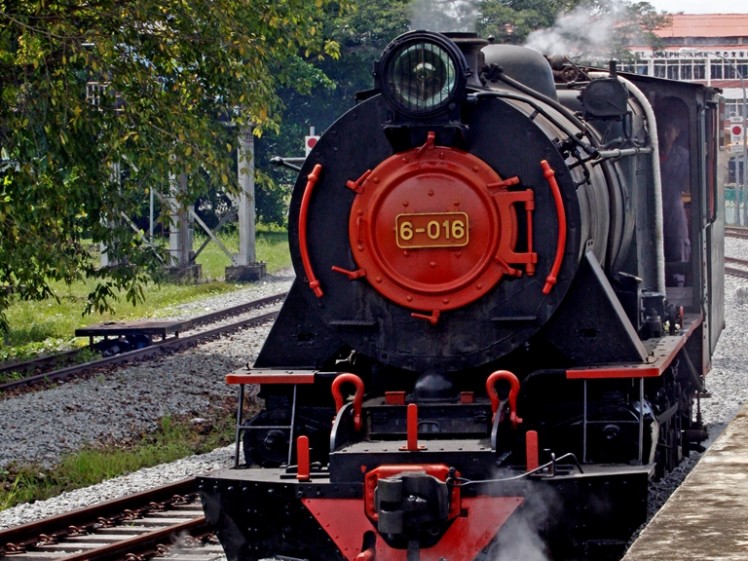
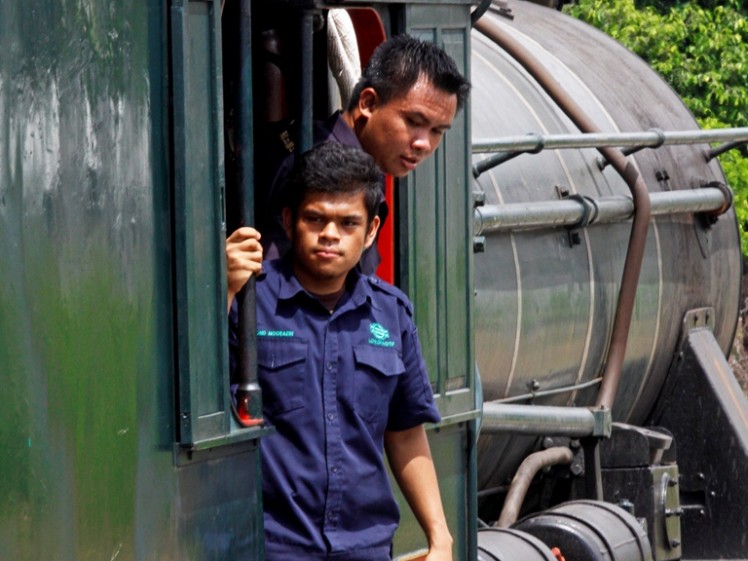
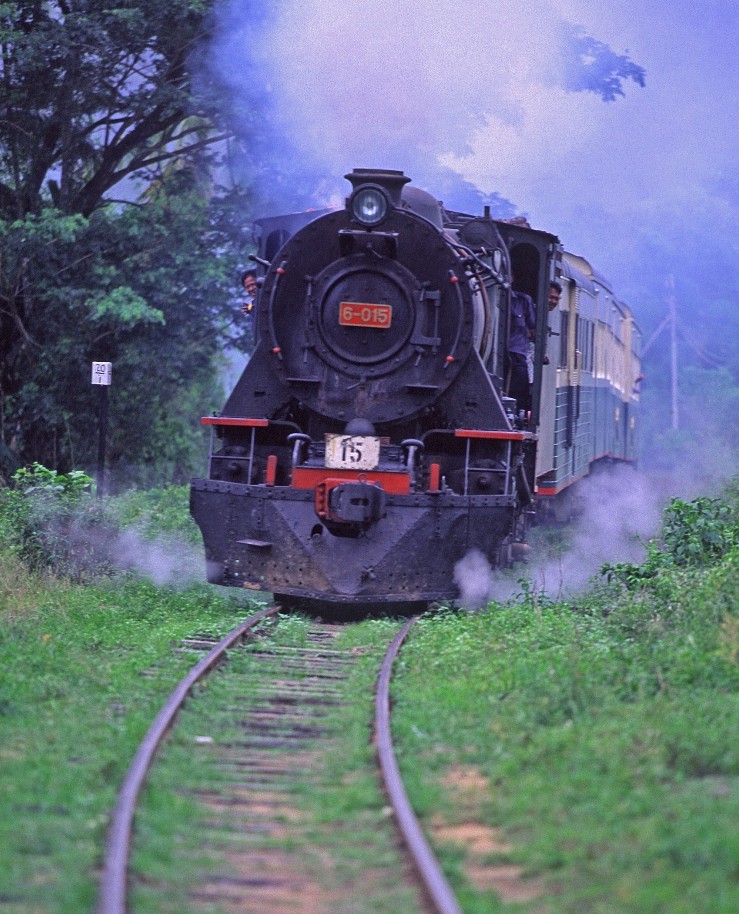
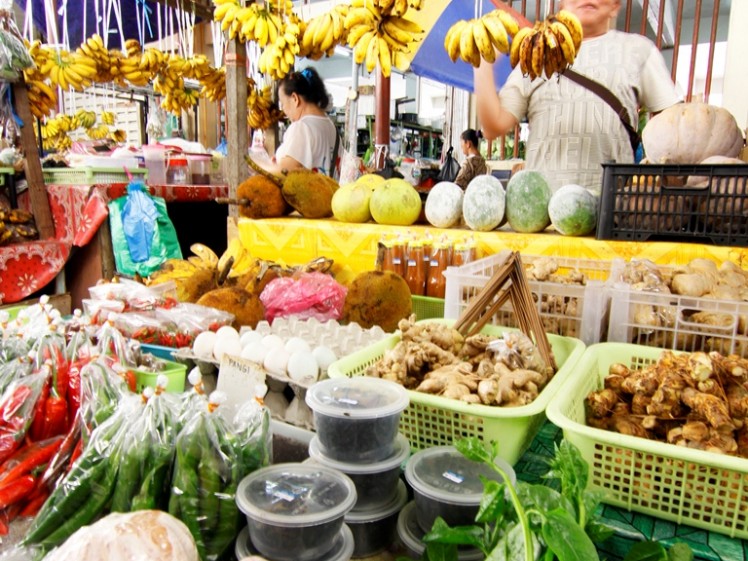
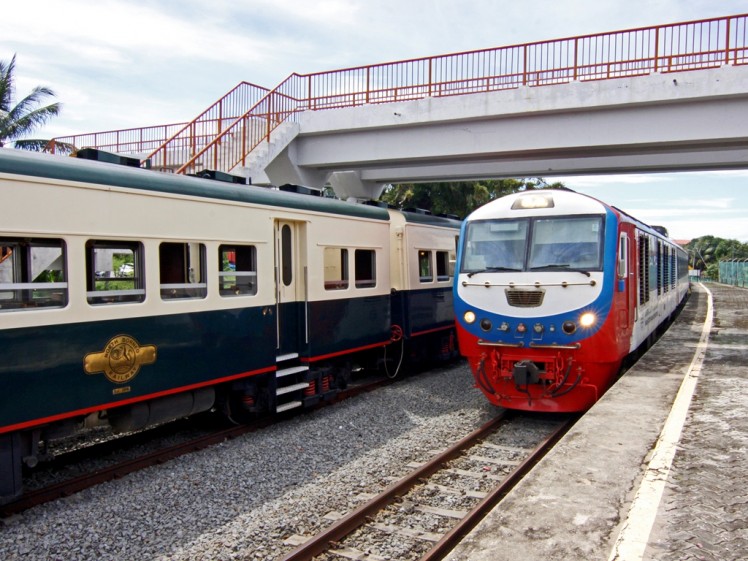


















Part of North Borneo’s great history, restored.
This used to be the terminus, right in the heart of Jesselton, now known as Kota Kinabalu

Thank you. You say that the train leaves at 10am each Wednesday but what time does it arrive back at the station upon its return? Thank you
Jessie Yeow
Let’s go
East coast first… hehehe
Hehhehe
Sounds like something to check out!
Train spotting David Bowden?
you know me
Share thoughts, questions, or feedback here!